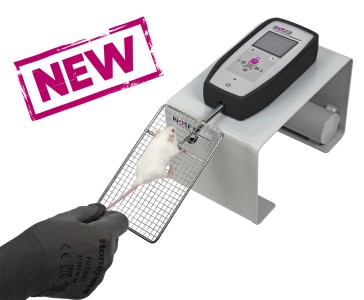Authors
V La Cognata, E Golini, R Iemmolo et al
Lab
Institute for Biomedical Research and Innovation, National Research Council, Catania, Italy
Journal
Neurobiology of Disease
Abstract
Amyotrophic Lateral Sclerosis (ALS) is a progressive neurodegenerative disease characterized by depletion of motor neurons (MNs), for which effective medical treatments are still required. Previous transcriptomic analysis revealed the up-regulation of C-X-C motif chemokine receptor 2 (CXCR2)-mRNA in a subset of sporadic ALS patients and SOD1G93A mice. Here, we confirmed the increase of CXCR2 in human ALS cortex, and showed that CXCR2 is mainly localized in cell bodies and axons of cortical neurons. We also investigated the effects of reparixin, an allosteric inhibitor of CXCR2, in degenerating human iPSC-derived MNs and SOD1G93A mice. In vitro, reparixin rescued MNs from apoptotic cell death, preserving neuronal morphology, mitochondrial membrane potential and cytoplasmic membrane integrity, whereas in vivo it improved neuromuscular function of SOD1G93A mice. Altogether, these data suggest a role for CXCR2 in ALS pathology and support its pharmacological inhibition as a candidate therapeutic strategy against ALS at least in a specific subgroup of patients.
BIOSEB Instruments Used
Grip strength test (BIO-GS3)
Source :

 Douleur - Allodynie/Hyperalgésie Thermique
Douleur - Allodynie/Hyperalgésie Thermique Douleur - Spontanée - Déficit de Posture
Douleur - Spontanée - Déficit de Posture Douleur - Allodynie/Hyperalgésie Mécanique
Douleur - Allodynie/Hyperalgésie Mécanique Apprentissage/Mémoire - Attention - Addiction
Apprentissage/Mémoire - Attention - Addiction Physiologie & Recherche Respiratoire
Physiologie & Recherche Respiratoire




































 Douleur
Douleur Système Nerveux Central (SNC)
Système Nerveux Central (SNC)  Neurodégénérescence
Neurodégénérescence Système sensoriel
Système sensoriel Système moteur
Système moteur Troubles de l'humeur
Troubles de l'humeur Autres pathologies
Autres pathologies Système musculaire
Système musculaire Articulations
Articulations Métabolisme
Métabolisme Thématiques transversales
Thématiques transversales Congrès & Meetings
Congrès & Meetings 